Stereo Microscope Polarizing LED Ring Light
Nov 12th 2018
Recently an industrial customer asked what combination of stereo microscope and lighting options would be best to view their circuit board quality assurance work. This customer's circuit boards were 4" x 6" without a lot of dimensional height. The circuit boards were opaque of course, so the lighting had to come from above the boards. What they needed was a solid, workhorse microscope, so we suggested the Richter Optica S6 stereo microscope on a track stand.
Next it was important to determine the appropriate lighting. A LED dual pipe light was an option, but the directed spotlight it provides is not really what their circuit board demands. That left us with a choice of LED ring lights.
The standard LED ring light has 48 LED lights and gives a very good, full-field illumination. The light has variable intensity, meaning you can adjust the brightness if you are getting too much glare on the circuit board. Below is a photo we captured of the circuit board under the LEDR ring light.
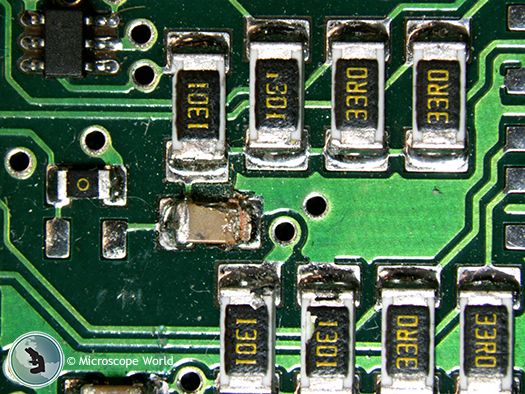
The other microscope lighting option is our polarizing LED ring light, which has 120 LED lights, a snap-on rotatable polarizer, and a drop-in analyzer. This light allows you to view samples with fully cross-polarized reflected light. This does not necessarily get rid of all the glare that remains under a standard LED ring light, but it does give you a qualitatively different view of the circuit board as shown below.
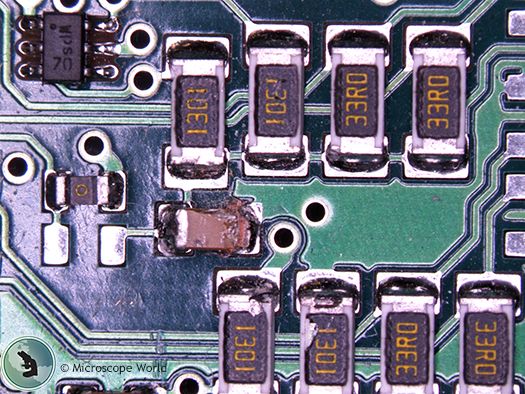
Notice the enhanced textural detail you have on the board's surface, particularly within the darker colored regions. Also, notice the writing on the cap in the upper left corner, which cannot be seen using the standard LED ring light.
As mentioned, the stereo microscope polarizing ring light provides cross-polarized, filtered light, the same as you would have with a reflected light polarizing microscope.
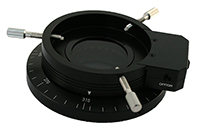 Because the polarizing light snaps onto the ring light housing, it is able to rotate a full 360º without moving the LED lights or the analyzer, which in turn, allows a great variety of filtered light. Take a look at how the image changes as we rotate around the dial.
Because the polarizing light snaps onto the ring light housing, it is able to rotate a full 360º without moving the LED lights or the analyzer, which in turn, allows a great variety of filtered light. Take a look at how the image changes as we rotate around the dial.
This is the circuit board with a regular LED ring light (no polarization):
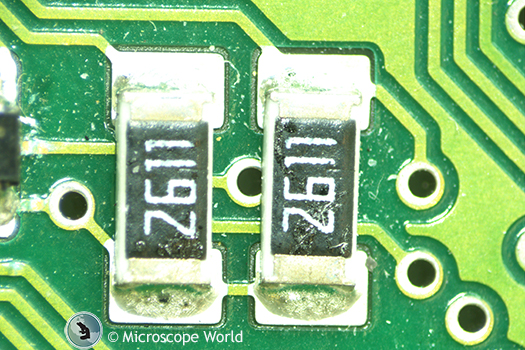
This next image is the circuit board with the polarizing ring light set to the 0º setting.
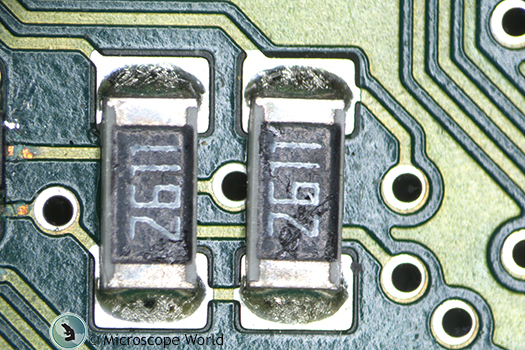
In the image below we have used the polarizing ring light set to 45º.
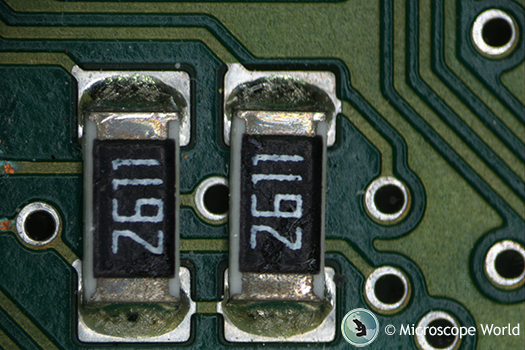
And finally, we captured the image below by setting the polarizing ring light to 90º.
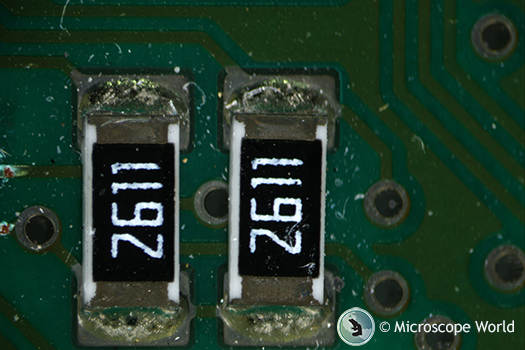
This image shows the polarizing LED ring light along with the analyzer insert.
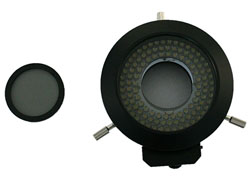
In the end, we told our customer the polarizing ring light is a great choice for their application because of its flexibility. The polarizing ring can easily be removed and the analyzer can be taken out, leaving you with a high-quality LED ring light that was 120 individual LED lights.
If you need a variable light source for your stereo microscopy work, the polarizing LED ring light is the way to go.
If you have questions regarding stereo microscope LED ring lights and your application, contact Microscope World and we will be happy to help.




